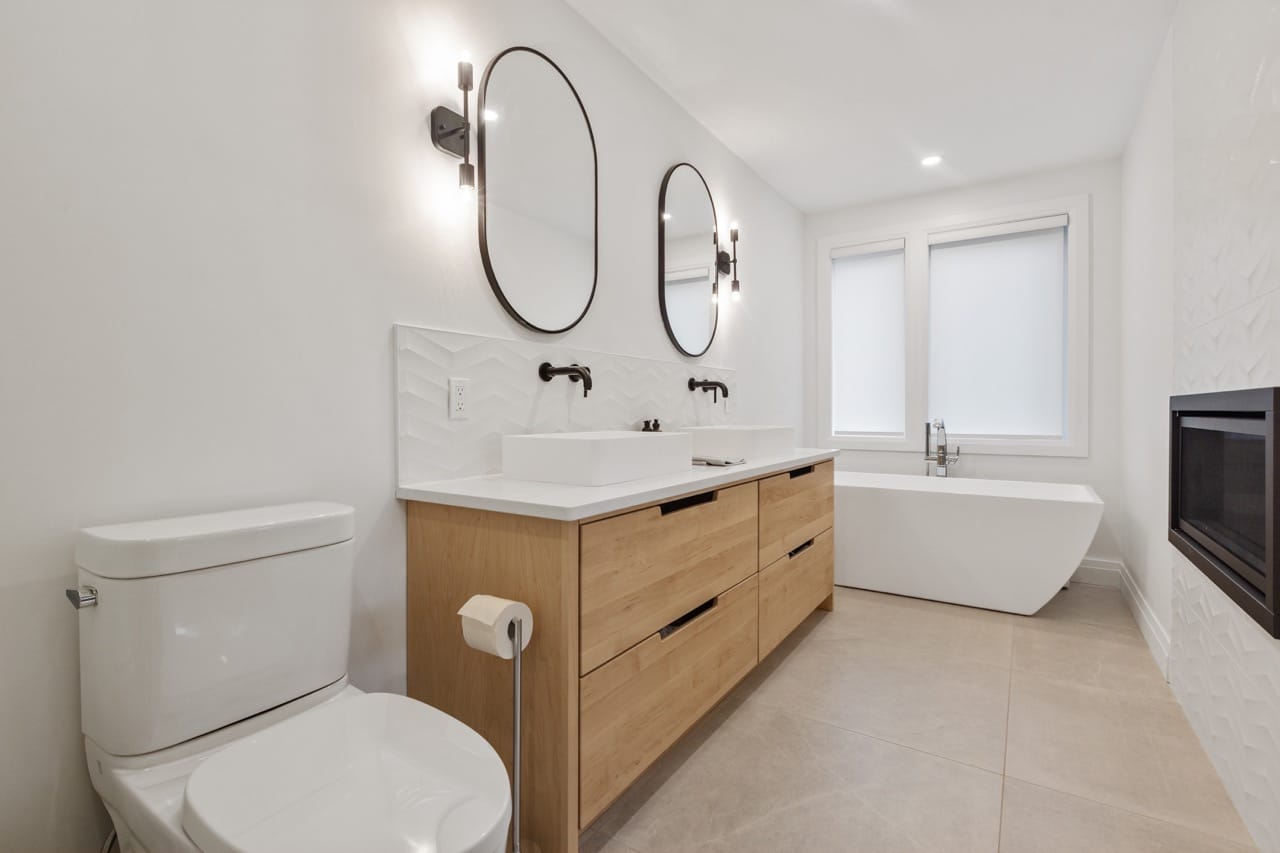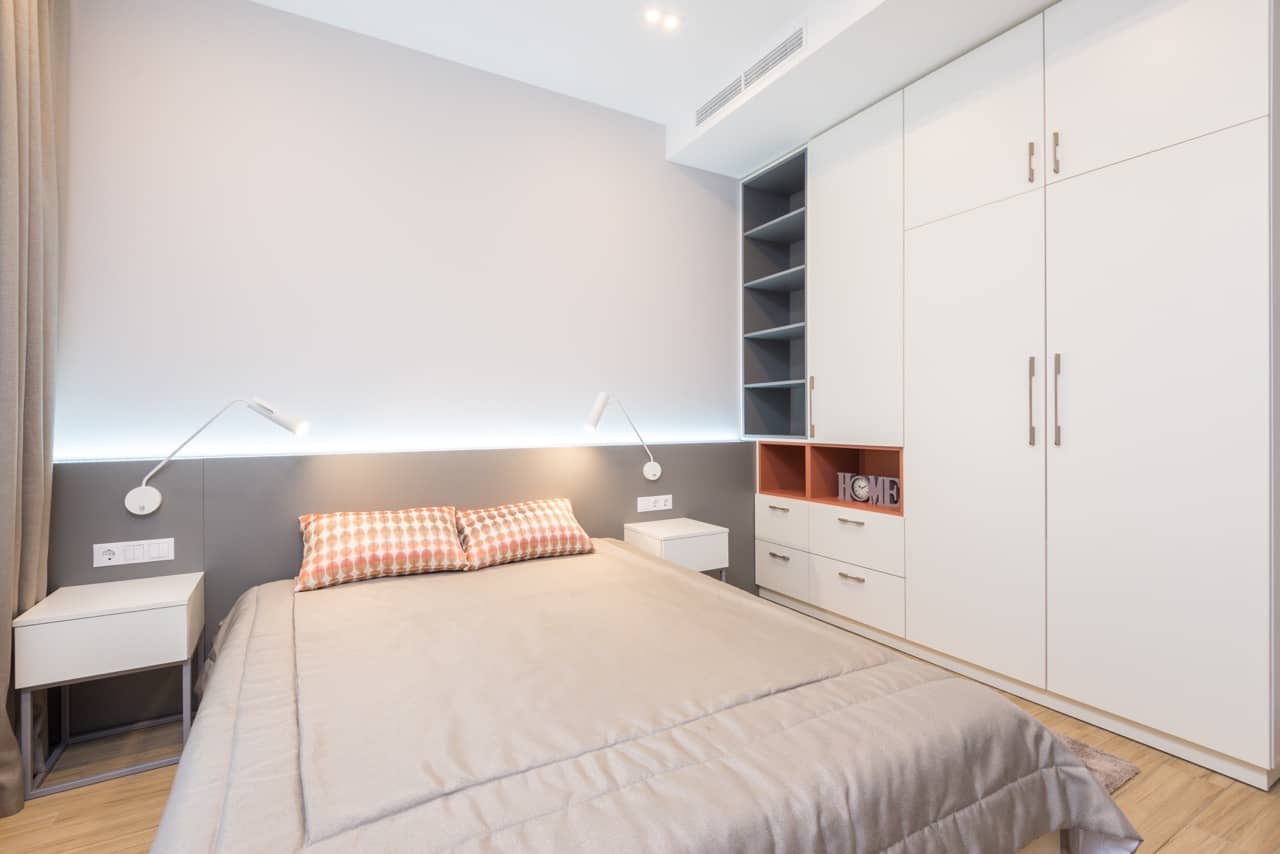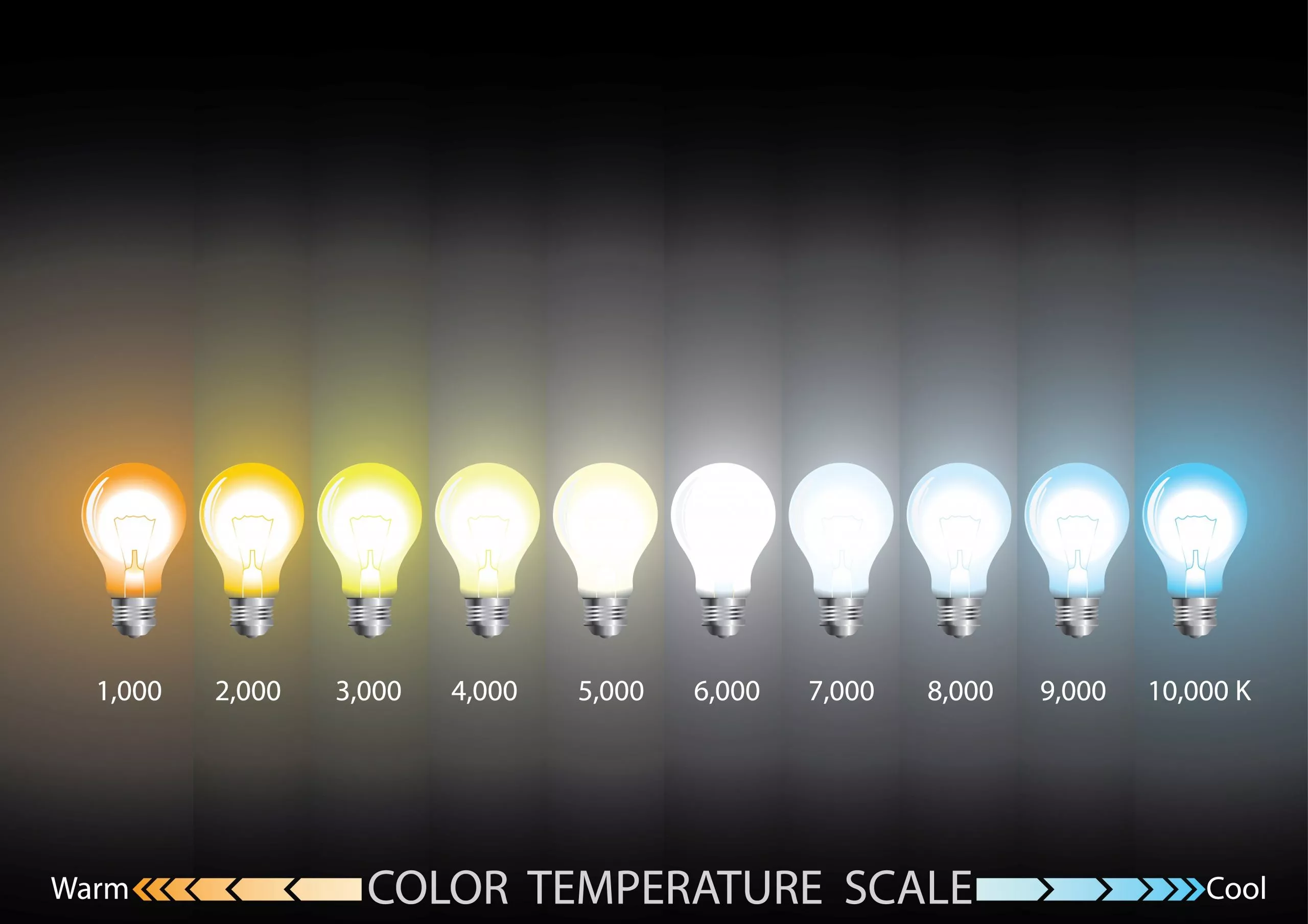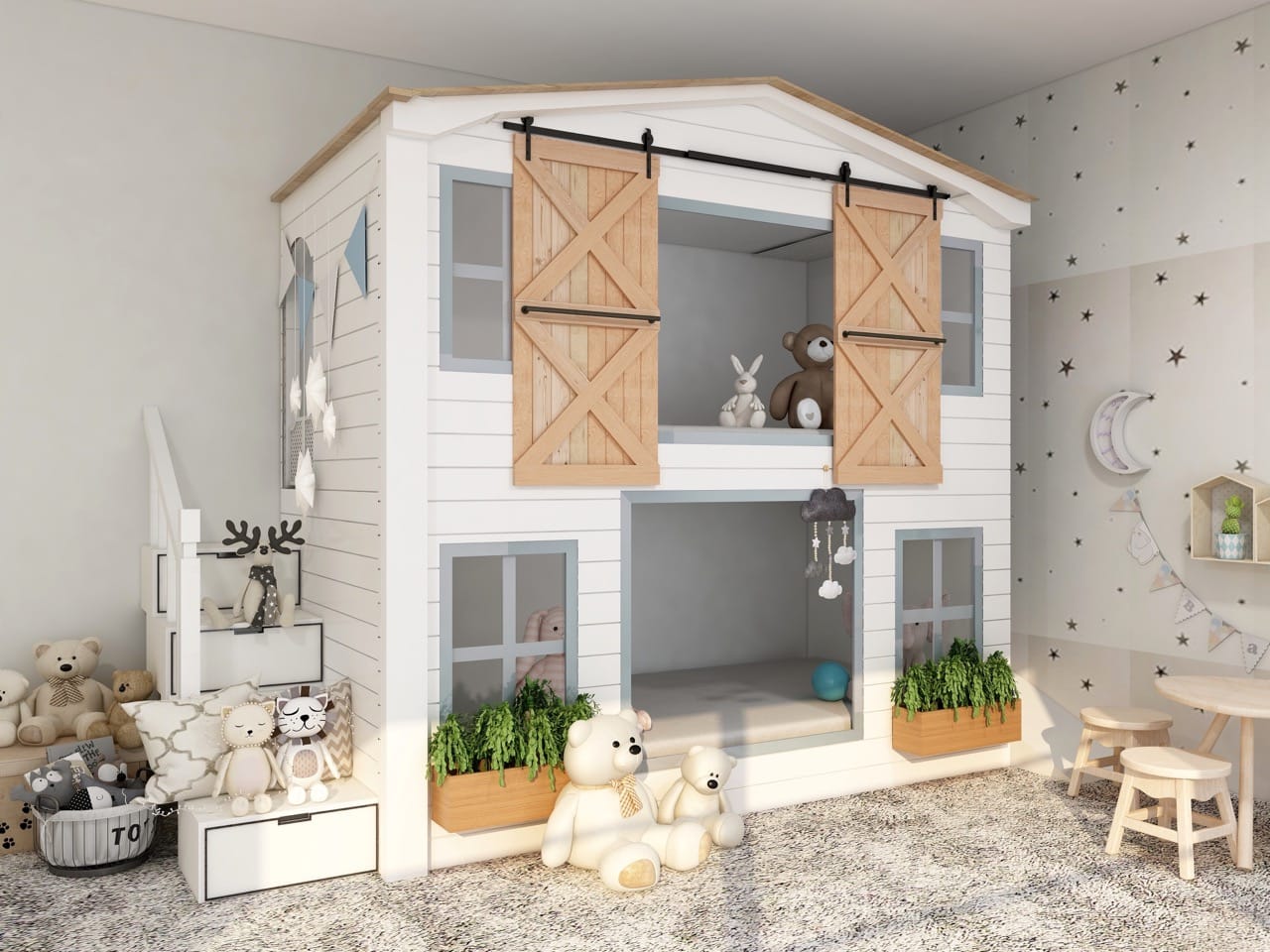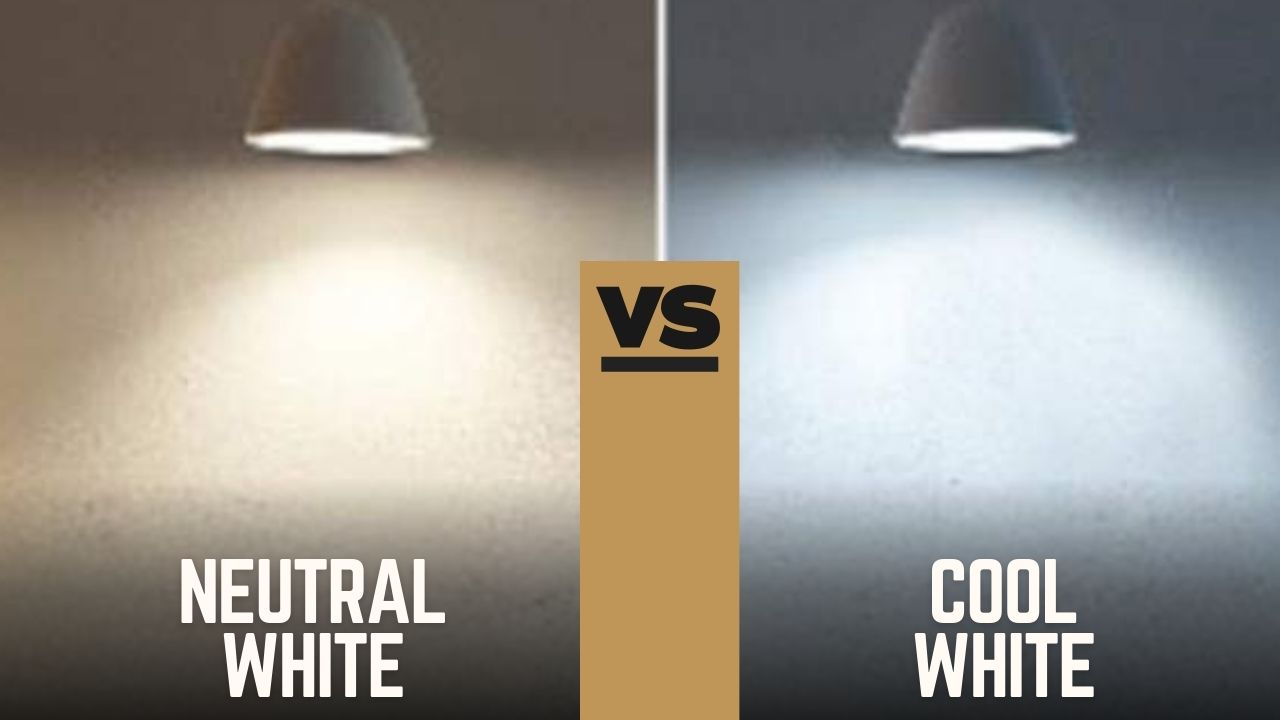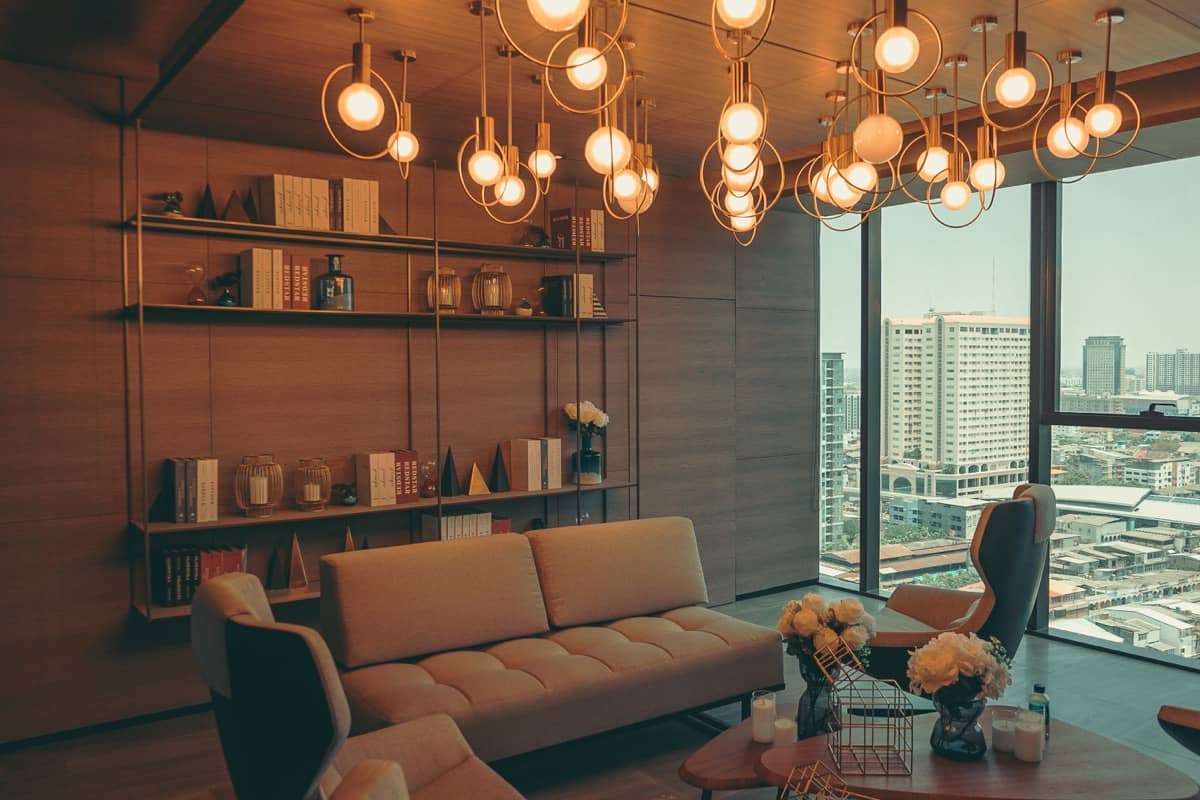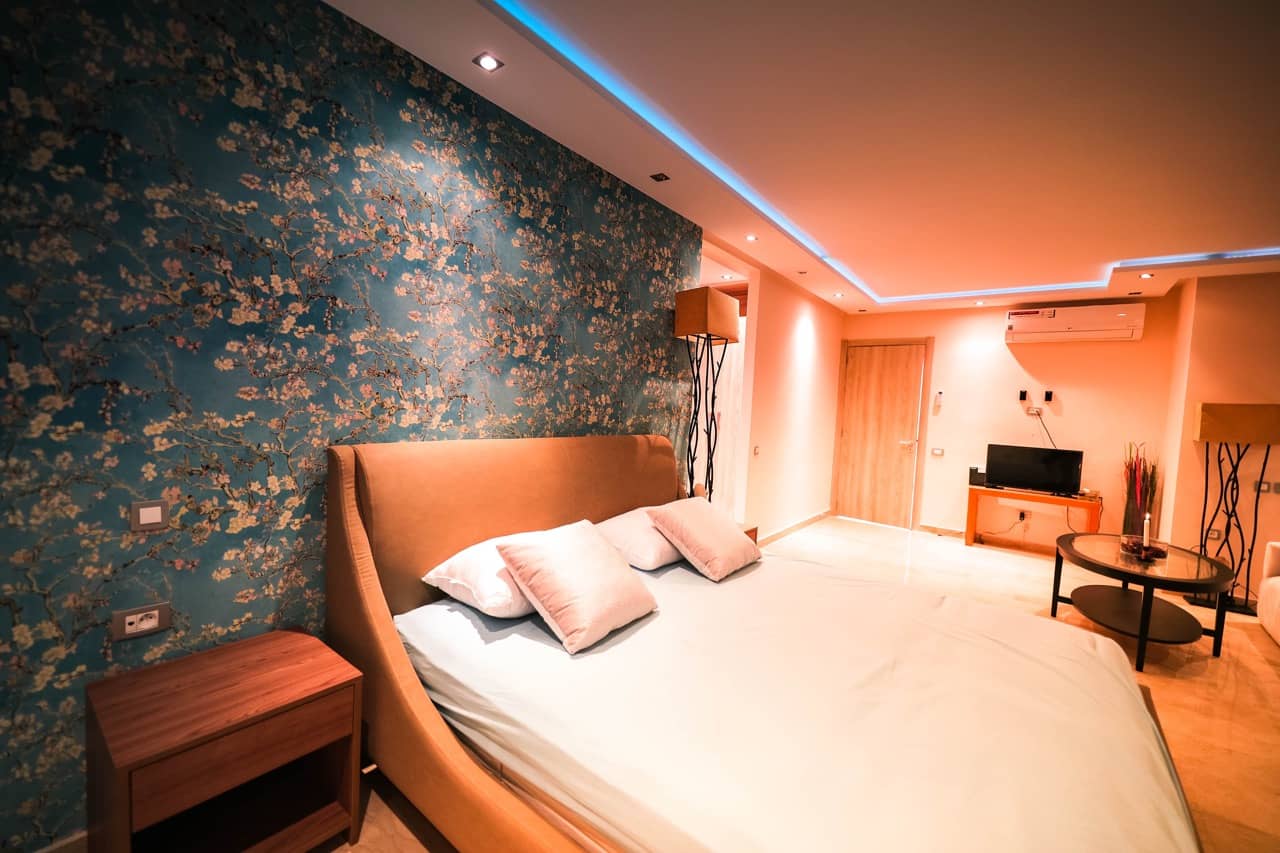Choosing the right color temperature for bathroom lighting is a crucial aspect of creating a harmonious and functional space. The bathroom is not merely a utilitarian area; it is also a place where we begin and end our days, seeking comfort, relaxation, and rejuvenation. While many factors contribute to the overall design and atmosphere of a bathroom, lighting plays an integral role in enhancing its ambiance and functionality.
Importance of choosing the right color temperature for bathroom lighting
The color temperature of lighting significantly impacts our mood, perception, and overall well-being. It determines whether the light emitted appears warm or cool, with each having its own distinct effects on us.
In a bathroom setting, where tasks such as grooming, applying makeup, or relaxing baths are common, selecting an appropriate color temperature becomes paramount. Ambient lighting with the wrong color temperature can lead to discomfort or even affect our ability to see clearly when performing specific tasks.
For example, excessively warm light may distort colors and make it challenging to apply makeup accurately or distinguish between different shades of clothing. On the other hand, overly cool light might create an intense environment that inhibits relaxation during baths or showers.
Overview of color temperature and its impact on the overall ambiance and functionality of a bathroom
The concept of color temperature in lighting refers to how “warm” or “cool” the light appears. It is measured in Kelvin (K) units on a scale that ranges from warm yellow-orange hues (lower values) to cooler blue-white tones (higher values).
Understanding this scale allows us to choose appropriate lighting for different areas within our bathrooms. The impact of color temperature goes beyond aesthetics; it also influences how we perceive space.
Cooler temperatures tend to make areas feel more expansive and energizing by mimicking daylight conditions, making them ideal for morning routines. On the other hand, warmer temperatures create a cozy and calming atmosphere, perfect for unwinding in the evening.
Moreover, color temperature can interact with various materials and finishes in the bathroom. It can either enhance or diminish their appearance.
For example, cool light tends to bring out blue tones in tiles or fixtures, while warm light accentuates warmer colors like reds or golds. Understanding these interactions allows us to choose lighting that complements the overall design scheme of our bathrooms.
Understanding Color Temperature
Definition of color temperature in lighting:
Color temperature in lighting refers to the characteristic color of light emitted by a light source. It is measured in Kelvin (K) and indicates whether the light appears warm or cool.
The color temperature of a light source determines its visual appearance and influences how objects and surfaces are perceived under that particular illumination. Understanding color temperature is essential when selecting lighting for different environments, including bathrooms, as it can greatly impact the overall atmosphere and functionality of a space. Explanation of Kelvin scale and its role in determining color temperature:
The Kelvin scale is used to measure color temperature. It starts at absolute zero (-273.15°C) and has no upper limit. In relation to lighting, the Kelvin scale ranges from warm colors (lower values) to cool colors (higher values).
Warm light has lower color temperatures, usually between 2700K and 3000K, while cool light has higher temperatures, typically ranging from 5000K to 6500K. The Kelvin scale allows us to classify different types of lighting based on their visual appearance. Different color temperatures and their corresponding effects on mood and perception:
Different color temperatures can have significant effects on mood, perception, and overall ambiance. Warm light with lower Kelvin values tends to create a cozy atmosphere associated with relaxation, comfort, and intimacy. It can make a bathroom feel inviting during evening routines or when taking baths or showers after a long day.
Conversely, cooler light with higher Kelvin values has an energizing effect on individuals. It promotes alertness and wakefulness by simulating natural daylight.
This type of lighting is ideal for morning routines when you need proper illumination for applying makeup or shaving. Color temperature also impacts how colors appear under different lighting conditions.
Warmer hues may appear more vibrant and comforting under warm light, while cooler colors can appear crisper and brighter under cool light. Therefore, selecting the right color temperature is crucial to achieving the desired mood and enhancing the overall aesthetic of a bathroom.
Factors to Consider in Bathroom Lighting
Purpose of the Bathroom
When selecting the appropriate color temperature for bathroom lighting, it is crucial to consider the intended purpose of the space. Bathrooms serve various functions, such as relaxation, grooming, and energizing.
For instance, if your bathroom primarily functions as a place for relaxation and unwinding after a long day, you may want to opt for warmer color temperatures. Warm light with color temperatures ranging from 2700K to 3000K creates a cozy ambiance that promotes relaxation and comfort.
On the other hand, bathrooms used primarily for grooming or energizing activities would benefit from cooler color temperatures ranging from 5000K to 6500K. These higher Kelvin values provide a vibrant and invigorating atmosphere that helps promote alertness and wakefulness during morning routines.
Natural Light Availability and its Interaction with Artificial Lighting
The availability of natural light in your bathroom plays an important role in determining the ideal color temperature for artificial lighting. If your bathroom receives ample natural light throughout the day, it is essential to consider how artificial lighting will interact with it.
Natural light tends to have a higher color temperature during daylight hours, typically around 5500K to 6500K. In this case, choosing artificial lighting with similar or slightly lower color temperatures can help seamlessly blend natural and artificial light sources without creating stark contrasts or noticeable shifts in ambiance.
Conversely, if your bathroom lacks natural light or has limited access to windows, you have more freedom in selecting the desired color temperature without considering its interaction with external light sources. You can focus solely on achieving the intended mood and functionality through carefully chosen artificial lighting solutions.
Bathroom Size, Layout, and Design Elements
The size of your bathroom along with its layout and design elements significantly influence the choice of lighting options available to you. In smaller bathrooms, it is crucial to utilize lighting fixtures that provide sufficient illumination without overwhelming the space. Recessed lighting or vanity lights with adjustable color temperatures can be great options as they offer flexibility and control over the intensity and direction of light.
Consider the layout of your bathroom when planning lighting arrangements. For example, if you have a specific area designated for makeup application or grooming, it may benefit from targeted lighting solutions such as sconces or adjustable task lights.
Furthermore, take into account the design elements present in your bathroom. Colors on walls, tiles, and fixtures can interact differently with various color temperatures.
Warmer color temperatures harmonize well with earthy tones and create a cozy atmosphere, while cooler color temperatures complement modern designs and cooler color schemes. By carefully considering these factors – purpose of the bathroom, natural light availability, and bathroom size/layout/design – you can make informed decisions about selecting the most suitable color temperature for your bathroom lighting needs.
Morning Routine: Energizing Light (5000K – 6500K)
When it comes to starting your day off on the right foot, the color temperature of your bathroom lighting plays an essential role. Cooler color temperatures ranging from 5000K to 6500K are ideal for energizing and awakening your senses in the morning. These higher Kelvin values emit a crisp, bluish-white light that mimics natural daylight, promoting alertness and helping you feel more awake.
One of the key benefits of cooler color temperatures in the morning is their ability to enhance visibility for tasks like applying makeup, shaving, or getting ready for the day ahead. The bright and vibrant light produced by these temperatures ensures accurate color rendering, which is crucial when trying to achieve a flawless makeup application or precision shaving.
Not only does energizing light help with practical tasks, but it also stimulates a sense of vigor and motivation. The cool tones can invigorate both body and mind, making it easier to jumpstart your day with enthusiasm and focus.

Evening Relaxation: Warm Light (2700K – 3000K)
As evening approaches and you wind down from a busy day, creating a cozy and relaxing atmosphere in your bathroom becomes paramount. This is where warm light with color temperatures ranging from 2700K to 3000K shines brightest (pun intended).
The soft yellowish glow emitted by these warmer hues helps induce feelings of comfort and relaxation. The warm light in this range is reminiscent of candlelight or sunset hues, which have long been associated with tranquility and serenity.
Bathing in this gentle radiance during baths or self-care routines can significantly enhance the experience by providing a soothing ambiance that calms both body and mind. In addition to fostering relaxation, warm light can also have a positive impact on your overall well-being.
It helps regulate your body’s production of melatonin, the hormone responsible for inducing sleep. By simulating the natural progression of daylight, it encourages your body to wind down naturally and promotes a more restful night’s sleep.
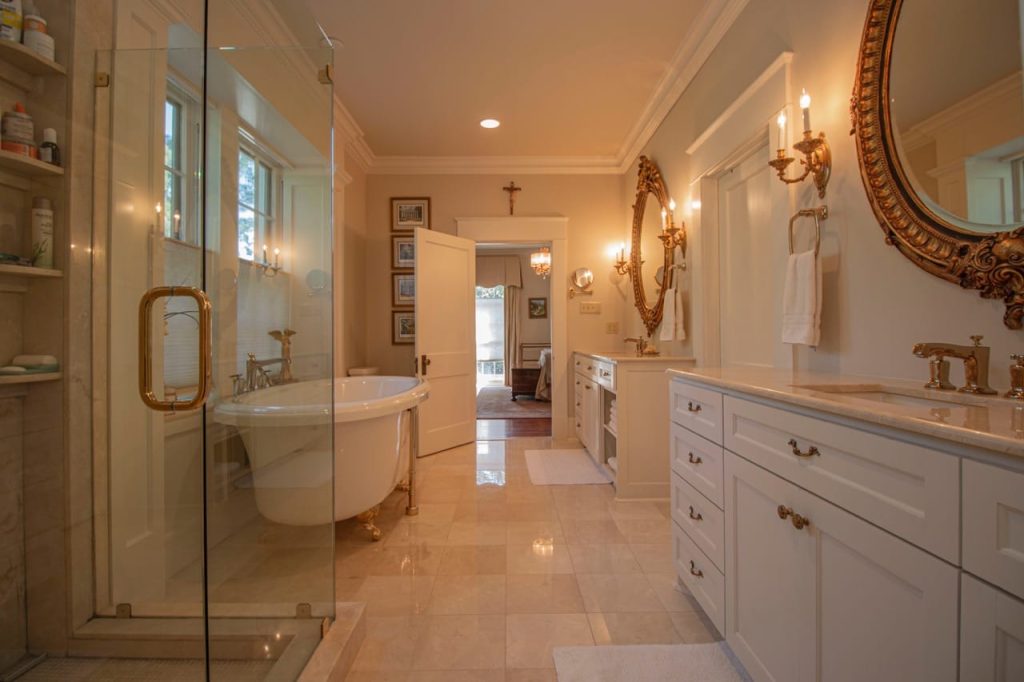
Ambient Lighting: Neutral White Light (3500K – 4000K)
When it comes to creating a harmonious balance in your bathroom decor, neutral white light with color temperatures ranging from 3500K to 4000K is the way to go. This range falls between cool and warm hues, providing an optimal balance that complements a wide variety of colors without causing eye strain or casting harsh shadows.
Ambient lighting serves as the foundation for any well-designed bathroom lighting scheme. It ensures that every corner of the space is adequately illuminated without overpowering specific areas or creating distracting contrasts.
This type of lighting is especially useful when carrying out tasks that require precision or attention to detail, such as grooming or applying skincare products. Moreover, neutral white light enhances visibility while maintaining a comfortable atmosphere.
It neither dominates nor detracts from other design elements in the bathroom but rather works harmoniously to enhance their aesthetic appeal. Whether you have warm-toned tiles or cool-colored fixtures, this versatile color temperature will effortlessly complement and showcase their true beauty.

The Role of Dimmers in Adjusting Color Temperature
Explanation on how dimmers can alter the perceived color temperature
Dimmers are versatile devices that allow you to adjust the brightness of your lighting fixtures, but they also have a significant impact on the perceived color temperature. By controlling the amount of electricity flowing to the light source, dimmers can effectively change the intensity of light emitted, thus altering the overall ambiance and color appearance. When dimming a light source, it is crucial to understand that some types of bulbs respond differently than others.
Incandescent and halogen bulbs naturally shift towards warmer tones as they are dimmed. This means that as you lower the brightness, these bulbs emit a softer and more golden glow.
On the other hand, LED bulbs maintain their color temperature when dimmed due to their advanced technology. However, modern LED bulbs equipped with “warm-dim” technology can replicate incandescent-like warmth as they are dimmed.
Advantages of installing dimmers
Installing dimmers in your bathroom lighting setup comes with several advantages beyond simply adjusting color temperature. Firstly, it allows you to create different moods and atmospheres according to your preference or specific activities taking place in the bathroom.
Whether you want bright lights for energizing mornings or a soft glow for relaxing baths, dimmers provide flexibility in customizing your lighting experience. Secondly, using dimmers can significantly enhance energy efficiency and extend bulb life.
By reducing light intensity through dimming, less electricity is consumed while maintaining adequate illumination levels. This not only saves on energy costs but also reduces greenhouse gas emissions associated with power generation.
Installing dimmer switches contributes to user comfort by reducing eye strain caused by excessive brightness or harsh lighting conditions. The ability to control light levels enables users to create an optimal balance between visual clarity and comfort in any given situation.
Conclusion
Selecting the right color temperature for your bathroom lighting is crucial to create an ambiance that suits your needs and preferences. However, don’t forget the role that dimmers play in adjusting the perceived color temperature. Dimmers offer the ability to transform the mood and atmosphere of your bathroom by altering light intensity and color appearance.
Besides providing flexibility and energy efficiency benefits, dimmer switches contribute to user comfort by allowing you to find the perfect balance between brightness levels and visual comfort. So, consider installing dimmers in your bathroom lighting setup for a truly customizable and enjoyable experience that perfectly complements your daily routine.

